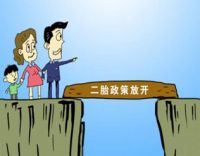New Second-Child Policy
The New Second-Child Policy (单独二孩) is a Chinese population policy allowing couples to have two children as long as one of them hails from a single-child household as mapped out in the Decision of The Third Plenum of the 18th Central Committee of the Communist Party of China (CPC).
China initiated its far-reaching one-child policy in the early 1970s. The policy soon became a fundamental guideline, according to which most Chinese families could only have one child from 1978 onwards.
However, birth control rates have since surpassed expectations. Due to the policy, the number of births declined by some 400 million in 40 years, greatly relieving the pressure on the environment caused by the overgrowing population, announced Mao Qun’an, spokesman of The National Health and Family Planning Commission, on Nov. 11, 2013.
Birth rates declined from 33.4 percent in 1970, to 12.1 percent in 2012. Meanwhile, the population growth rate dropped from 25.8 percent to 4.95 percent. The latter registered only half of the average growth in the world.
The policy was eased when this single-child-generation reached parental age. China has since 2011 adopted a comprehensive policy with which parents who come from sing-child family can have two children.
Yet the country now finds itself challenged by problems such as being more likely to run into a graying society before becoming moderately wealthy, a shortage of labor force and elderly care supported by one-child families.
In regards to these issues, the public started to call for further relaxation of the family-planning policy, suggesting the country allow those families with only one parent who is a single child, to be able to have two children.
According to the China Aging Course Development Report 2013, the number of elderly people will reach 202 million in 2013. Figures from National Statistics Office show that the labor force, aged 15 to 59, had reached 937.27 million by late 2012, reducing by 3.45 million from the previous year.
From the adoption of the policy of reform and opening up onwards, the demographic dividend has formed a major force behind China’s continuous economic growth. Therefore, many experts believe the decline of the nation’s birth rate will potentially affect its future growth.
An authoritative forecast shows that with the easing of the latest family-planning policy, the population can grow by 1 million each year. This growth is unlikely to hit 2 million.
According to the Demographic Development Strategy Research conducted by the State Council, China's population number should be controlled around 1.5 billion, while its birth rate should be around 1.8. Any figures higher or lower than those standards would be incompatible with the nation's economic and social development. Nevertheless, the current birth rate hovers between 1.5 and 1.6.
On Nov. 15, 2013, the CPC Central Committee issued the Decision, which clearly states that any families who have at least one parent being a single child can have two children.
The new policy is expected to go into force in some provincial regions in the first quarter of 2014. The health and family planning authorities at various levels are conducting risk assessment for the policy.
Although there is no clear timetable, the new family planning policy has attracted worldwide attention and triggered a sharp growth of stock prices of mother and infant products.
